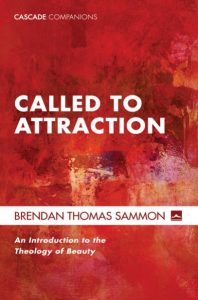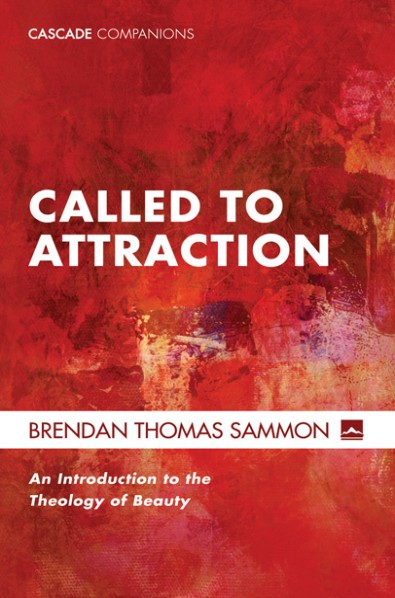Sammon, Brendan Thomas. Called to Attraction: An Introduction to the Theology of Beauty. Eugene, OR: Cascade Books, 2017, pp. 160, $22, Paperback.
Brendan Sammon is an Assistant Professor of Systematic Theology at Saint Joseph’s University in Philadelphia, Pennsylvania. He teaches courses on both The Beauty of God and Beauty and Consciousness at the Movies. In his first book, The God Who is Beauty: Beauty as a Divine Name in Thomas Aquinas and Dionysius the Areopagite (Eugene, OR: Pickwick Publications, 2013), Sammon examines the Medieval thoughts binding theology and beauty together. In Called to Attraction: An Introduction to the Theology of Beauty, he broadly explores how beauty and theology have interacted from ancient origins to the twentieth century.
Sammon moves through time periods for each of the seven chapters of his book. A helpful introduction sets up the book with three introductory arguments to set the boundaries for what he intends to accomplish in his short volume. First, he argues his theology of beauty is derived from a divine name approach. Consequently, all of his conclusions flow from the idea that beauty is an attribute of God. He writes, “These divine names could be called God’s public identity, or the appearance that God takes in the world outside of those faith traditions that have arisen around what is believed to be God’s revealed identity.” (p. 3). His second introductory argument is that beauty is a more helpful category for theological discourse than aesthetics. He argues beauty is more ancient and more meaningful, and so he is making a theology of beauty and not a theological aesthetics. Last, he highlights he limited his book in scope because as it is intended to be an introduction to the subject.
The seven chapters are titled: Ancient Origins of Beauty’s Association with God, The Beauty of God in the Early Church, Giving God the Name Beauty, Beauty at the Dawn of the Middle Ages, The Medieval Theology of Beauty, The Theology of Beauty in the Modern Period, and The Return of Beauty in the Twentieth-Century. Each chapter examines a few key people or themes considered significant for the period. These figures range from Plato and Augustine to Kierkegaard and Hans Urs von Balthasar. The themes highlight biblical books such as Genesis and focus on ideas such as the display of beauty or how theology developed to include beauty as a name for God.
This book hits on key figures throughout church history and holds most of the expected voices found in a theology of beauty. Such voices include Aquinas and Dionysuius the Areapogite, who the author has previous works written on. The sections on these two men are helpful and insightful. Sammon also writes on the Apostle Paul and St. Francis of Assissi. In these sections, he leads to reader to understand how these men of theological heritage contributed to the conversations on beauty. Their contributions validate the topic of beauty in theology. However, it is worth noting that Sammon does not include Jonathan Edwards. In a book on beauty that surveys key figures, leaving Edwards out is an interesting choice. Edwards’s absence may be due to Sammon’s Catholic background. However, he includes Fyodor Dostoeyksy (Eastern Orthodox) in his chapter on the Modern era making Edwards’s absence curious. It is also worth noting the shift from the Medieval to the Modern Era misses the significant conversations in the Renaissance on beauty.
For a biblical-theological student, this book is very helpful for an entry level class or discussion on beauty and aesthetics. It is manageable in both length and content, giving preliminary facts and details to help a reader know the theological importance of beauty through the centuries. Sammon has placed discussion questions at the end of each chapter to help the reader grasp and comprehend the themes. This inclusion may prove extremely helpful in an entry level class.
The theme of beauty is woven throughout the biblical text and human history, and this book highlights how the theme has been explored in various epochs. It is helpful in giving a birds-eye view of the entire landscape for discussions of beauty. Anyone looking for a short and manageable read as in introduction to beauty and aesthetics will benefit from this book. However, it should be paired with other material covering beauty from the Protestant tradition. At the very least, Sammon’s book should be supplemented with another that covers the works of Jonathan Edwards as it relates to discussions on beauty and theological aesthetics.
Amanda Jenkins
Grand Canyon University





